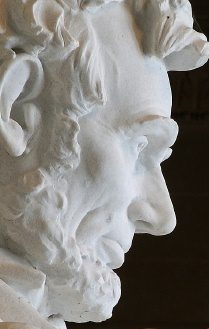The case against the other unfortunate area School Board that trusted Johnson Controls Inc.
From the Timberjay courtesy its Editor:
Justices have many questions on school case
By Marshall Helmberger
ST. PAUL – The seven justices of the Minnesota Supreme Court spent just over an hour on Tuesday peppering attorneys Steve Knutson and Erick Kaardal with questions as they presented oral arguments in the case that has come to be known as Abrahamson v. St. Louis County Schools.
Both sides in the dispute agree the court’s decision could have a major impact on school referenda for years to come.
“This is a very important case,” said Erick Kaardal, who is representing Tower Mayor Steve Abrahamson and Coalition for Community Schools President Tim Kotzian. Broadly at issue is the question of whether school districts must file campaign finance disclosure forms if they spend tax dollars to promote a ballot measure. Also at issue is whether the St. Louis County School District disseminated false information in their effort to win passage of a $78.8 million bond measure, and whether doing so violated state laws on fair campaign practices.
The justices wasted little time on the attorneys’ prepared remarks, frequently interrupting both sides with probing questions. Knutson, representing the school district, tried to set the stage for his arguments, claiming that the school district had faced a financial crisis without drastic action. “The other side would argue that was false, ” interjected Justice Alan Page, who noted that the school district had approved staff reductions in June 2009 that had substantially improved the school district’s financial status.
Knutson argued that the school district had based its financial claims on its 2008-09 budget and had always made clear that its projected $4.1 million deficit assumed that the district took no action to fix the problem. But Page persisted: “By the time of the vote, the district had already taken action,” he said.
The justices also seemed to question Knutson’s argument that the school district cannot be considered a campaign committee. Under the statute, a committee includes “corporations, associations, or persons acting together.”
“It seems to me your problem is that the school district is a public corporation,” said Justice Barry Anderson.
Knutson disagreed, pointing to other statutes in which corporations and school districts are defined differently.
Knutson faced his loudest objection from Justice David Stras, who challenged Knutson’s suggestion that campaign finance rules are limited to organizations that are “formed” specifically to influence a ballot measure or other vote. “That leads to an absurd conclusion,” said an animated Stras, who suggested that under Knutson’s legal theory, an association of golfing buddies could spend millions of dollars to influence campaigns without having to report their spending as long as their “association” pre-dates any particular election. “So, in essence, you’re asking this court to gut the state’s campaign disclosure requirements?” asked Stras.
Knutson suggested it was the Legislature’s statutory language that did that.
Justice Paul Anderson asked Knutson if, under his legal theory, the Target Corporation would have to disclose campaign spending, since it was clearly not formed to influence ballot measures. Knutson said that only entities formed specifically to influence a ballot measure are subject to campaign finance disclosure, a view that would all but eliminate the effect of the law.
While the justices appeared skeptical of Knutson’s arguments, Kaardal didn’t escape close scrutiny himself. Justice Paul Anderson noted that both sides agreed that school districts can’t legally spend money to influence voters on a ballot measures, which left him questioning why the Legislature would require them to disclose such spending. “I’m perplexed,” he said.
Knutson, on rebuttal, tried to advance that argument further, calling Kaardal’s contention that the campaign laws applied to school board officials as well as the public “ludicrous. Under questioning from justices, Knutson noted that school districts aren’t allowed to spend so much as a dollar campaigning for a ballot measure, while under the campaign finance law, they could spend up to $749 without reporting it. “It would allow school districts to spend up to $749 illegally,” he said. “That’s what I mean by ludicrous,”he said.
Kaardal was probed to detail his own arguments. Stras asked which party had the responsibility to report campaign spending. “Should the school district or the school board report? Or both of them?” he asked. Kaardal said more disclosure is better.
Case has taken twists and turns
The case has charted a winding path to the state’s Supreme Court. It was initially filed with the Office of Administrative Hearings in November 2010, but was dismissed by an administrative law judge, who determined that school boards aren’t covered by campaign disclosure rules. The ALJ also found that statements made by the school district in published brochures did not qualify as false under fair campaign statutes, although the judge did acknowledge that the information put out by the district may be construed as promotional.
That administrative law judge’s decision was overturned last July by the state’s Court of Appeals, which determined that school districts are public corporations and that they meet the definition of a campaign committee if they spend funds to promote a ballot measure. The court further ruled that the school district’s campaign spending was not authorized by law, and it remanded some of the school district’s allegedly false statements to the administrative law judge for an evidentiary hearing.
The school board, last August, voted to pursue its own appeal to the Supreme Court and the court agreed to accept the case last fall. Both sides presented legal briefs in December in advance of Tuesday’s oral arguments.
Unlike the Court of Appeals, which has 90 days to issue a ruling, the Supreme Court has no time limit for issuing its opinion.
